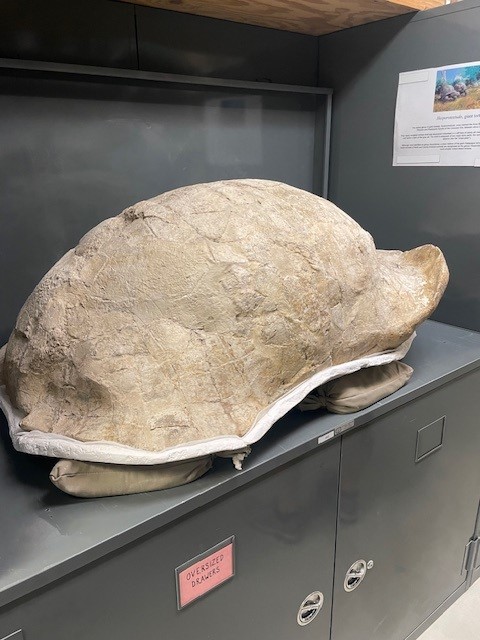The fossil beds in Anza-Borrego Desert State Park hold significant scientific and educational value, inspiring a quest for knowledge about prehistoric life and the region’s geological history. The Park contains one of North America’s richest concentrations of Pleistocene fossils, dating from 2.5 million to 10,000 years ago. Fossils found here include those of mammoths, camels, horses, giant ground sloths, and many other animals. In addition to terrestrial fossils, marine fossils from the Miocene epoch (23 to 5 million years ago) have been found, indicating that an ancient sea once covered the region. These include shark teeth, whale bones, and other marine organisms.
The fossil beds provide crucial information about the region’s geological history, including changes in climate, sea levels, and tectonic activity. Scientists can reconstruct ancient environments by studying these fossils and understand how the landscape has evolved over millions of years. They offer insights into the evolution and adaptation of various species. Researchers can track evolutionary changes and extinction events by comparing fossils from different periods, contributing to a broader understanding of biodiversity and ecological dynamics. Fossil evidence helps scientists study past climate conditions and how ecosystems respond to climate change. This knowledge is valuable for predicting and understanding the impacts of current and future climate change on modern ecosystems.
The Park is a guardian of the fossil sites, protecting them from vandalism, theft, and natural erosion. Its conservation efforts ensure these invaluable resources are preserved for future scientific study and public education, providing reassurance and confidence in the preservation efforts.
Notable Discoveries
Mammoth Bones: The discovery of mammoth bones and tusks has provided significant information about these ancient giants, including their size, diet, and behavior.
Giant Ground Sloths: Fossils of giant ground sloths, some of the largest land mammals of their time, offer insights into the diverse megafauna that once roamed the region.
Did you know that Anza-Borrego Desert State Park is the only California state park with a paleontology department? This specialized department is essential due to the sheer number of fossils in the Park, ensuring that these critical resources are appropriately studied and preserved.






The fossil beds of Anza-Borrego Desert State Park are a window into the past, providing invaluable data for scientists and providing a deeper public understanding of Earth’s history. Their preservation and study are essential for advancing our knowledge of ancient life and environmental change.
If you’d like to learn more, including Paleontology events, visit Anza-Borrego Desert Paleontology Society homepage (anzaborregopaleo.org).






